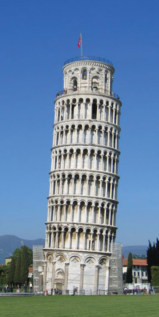Books on scientific myth-making, soft matter and the history of the Royal Society, reviewed by Margaret Harris and Matin Durrani

Busting scientific myths
Galileo disproved Aristotle by dropping lead balls off the Tower of Pisa. Darwin deduced evolution by observing differently shaped beaks in Galapagos finches. J J Thomson discovered the electron. All three stories are commonly presented as fact but, according to University of Texas historian Alberto Martínez, they are actually myths. In his fascinating and thought-provoking book Science Secrets: the Truth About Darwin’s Finches, Einstein’s Wife, and Other Myths, Martínez traces how such scientific myths developed. In a chapter on Thomson and the electron, for example, he shows that, while Thomson certainly performed important experiments on cathode rays, he owes his “electron discoverer” status in part to his former students, who helped spread what Martínez calls a “narrow, simplistic discovery tale”. Other myths are more complex. In Galileo’s case, we know that he wrote about the motion of falling objects and that, unlike Aristotle, he correctly predicted that a light object and a heavy one will land simultaneously if dropped from the same height at the same time. However, Galileo’s preserved writings contain no hint that he ever performed experiments to prove it, and the first secondhand account of him doing so was not published until almost 70 years after his death. Worse, several of Galileo’s contemporaries who did perform the experiment got the wrong answer – the heavier object appeared to land first. Over the centuries, Martínez writes, this ambiguous incident has been repeatedly enhanced until it has become a turning point in the history of science. Intriguingly, Martínez suggests that such myth-making is both inevitable and not entirely bad. Scientific myths, he writes, “function as a marker, an apparent milestone to punctuate and orient our historical imagination”, and vivid stories may even attract young children to study science. Still, he argues, it is important to understand how such myths are made, in order to avoid the “powerful urge to ever-so-slightly misread and misrepresent”.
- 2011 University of Pittsburgh Press £21.95/$24.95hb 344pp
Dreams or nightmares?
Anyone writing a book about black holes, supersymmetry, dark energy or any other topic from the extremes of physics has the advantage of dealing with fundamental ideas. But for books that seek to explain more everyday physics, the challenge is to find an angle that will make the reader care. The approach taken by Roberto Piazza in Soft Matter: the Stuff that Dreams are Made Of is to look at seemingly ordinary materials like polymers, colloids, gels and soaps and show how much interesting condensed-matter physics they contain. Piazza, a physicist at the Politecnico di Milano in Italy, is an enthusiastic and knowledgeable guide whose book will be the perfect starting point for a new graduate student in the field. Topics like the random-walk nature of a polymer chain are tackled delightfully and much soft-matter “lore” is contained here. Unfortunately, Piazza’s target readers – the elusive educated non-scientist sought by all popular-science writers – will find his plod through topic after topic, with no over-arching narrative, hard to digest. Yes, there is much in common between milk and paint, but simply asking “what would we do without colloids?”, as Piazza does, is unlikely to be much of a motivation. In fact, many potential readers will be put off by the preface alone, where Piazza clumsily imagines a day in the life of “a gentle lady” going about her shopping, cleaning and cooking to show the impact of soft matter in the modern world. It is embarrassing and cringeworthy. The author is not helped by an overly chatty style – translated from the original Italian – that quickly starts to grate. The formula for making soft-matter physics interesting to a non-physicist remains, it seems, a distant dream.
- Springer 2011 £22.99/$24.95pb 279pp
The shoulders of giants
Three hundred and fifty years ago last November, a group of scientifically minded gentlemen met in London to establish a “College for the Promoting of Physico-Mathematical Experimental Learning”. To keep the discourse polite, these first members of what is now the Royal Society banned all talk of God, politics and any news not connected with natural philosophy. Fortunately, that still left them plenty to discuss. In Seeing Further: the Story of Science, Discovery and the Genius of the Royal Society, a collection of scientists, writers and historians reflect on the work of the Royal Society and its role in shaping both scientific and popular culture. After a brief foreword by editor Bill Bryson, science writer James Gleick deftly illustrates the breadth of members’ interests in the society’s early days. So little was then known about the natural world that the new society was interested in everything from monstrous heads to the Northern Lights. At one point, it even voted to send enquiries to Iceland regarding “what is said there concerning raining mice”. Seeing Further, however, is as much about the present and future as it is about the past, as a suite of essays near the end on climate change and the Royal Society’s role in studying it shows. The final word goes to the Cambridge astrophysicist (and former Royal Society president) Martin Rees, who speculates on what issues may occupy the society in 2060, its 400th anniversary.
- 2010 HarperCollins £18.99/$35.00hb 496pp


